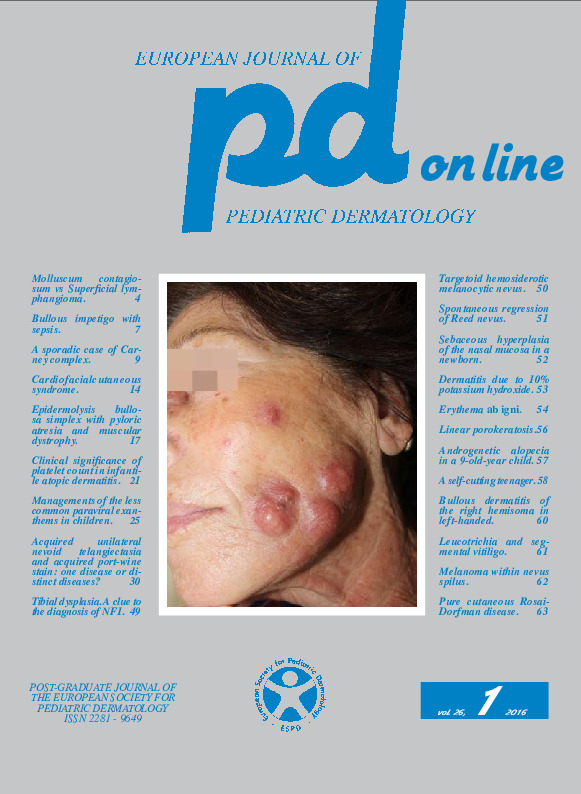Erythema ab igni
Downloads
DOI:
https://doi.org/10.26326/2281-9649.26.1.1198How to Cite
Milano A. 2016. Erythema ab igni. Eur. J. Pediat. Dermatol. 26 (1):54-5. 10.26326/2281-9649.26.1.1198.
pp. 54-5
Abstract
Erythema ab igni is an erythematous pigmentary skin disorder with reticulated appearance caused by repeated exposure to infrared radiation, which are not hot enough to cause an acute burn. It can occur at any age and contributing factors are all the conditions that can be countered by the contribution of heat (no central heating, acrocyanosis, hypothyroidism responsible for hypothermia, chronic pain of various types) and work in hot environments, as happens for bakers and foundry workers (1); a recent technology cause is the use of laptops (3) that rest on the thighs. The histological findings are characterized by epidermal atrophy, incontinence of pigment and lichenoid infiltrate; alterations similar to those caused by ultraviolet rays, such as dermal elastosis and atypia of keratinocytes till to squamous cell carcinoma can be also present. The initial clinical lesions is a reticulated erythema that in its shape resembles that of physiological cutis marmorata and livedo; the lesions may be symmetrical as in the case 4, but they are often asymmetrical and in relation to the responsible thermal stimulus as in case 1 and 2; sometime bullous lesions can be associated (4) indicating an acute burn. When exposure to heat continues you can observe melanic pigmentation and epidermal atrophy; in the most severe cases you can see ulcerations that can be expression of epidermal tumors such as squamous cell and Merkel cell carcinomas (2). The initial lesions may regress when exposure to the heat source is discontinued; pigmentation and epidermal atrophy are persistent and the patient should be monitored for the possible neoplastic complications. The differential diagnosis is simple in asymmetric forms, whereas symmetrical forms should be differentiated from cutis marmorata and livedo reticularis: the history that highlights the prolonged exposure to a thermal stimulus is a clue to the diagnosis.Keywords
Erythema, Ab igne

